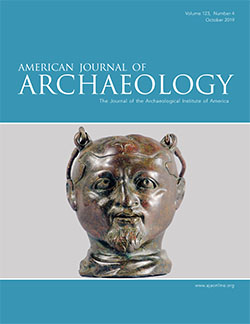AJA Open Access
BY-NCOctober 2019 (123.4)
Book Review
Paesaggi d’acque: La laguna di Orbetello e il Monte Argentario tra preistoria ed età romana
Edited by Nuccia Negroni Catacchio, Massimo Cardosa, and Andrea Dolfini
Reviewed by Alessandro Sebastiani
This volume aims to deliver the results of the large survey project “Paesaggi d’Acque” carried out in southern Tuscany in the area around the lagoon of Orbetello and Monte Argentario (in the modern province of Grosseto). It considers a landscape very close to the ancient ager Cosanus, ideally representing its northern continuation. It also connects with previous research, first the South Etruria Project and then the Albegna River Valley Project. The title of the volume, Paesaggi d’acque (landscapes of waters), recalls the publication of the Albegna Project, Paesaggi d’Etruria (landscapes of Etruria) in 2002. For this reviewer, a scholar who has dedicated the last 10 years of research to this part of coastal Tuscany, personal interest and a desire to widen the spectrum of parallels for the settlement networks of this region may have raised high expectations around this reading. Certain aspects of the publication, such as the environmental reconstructions, appear on solid footing, but the narratives of the reconstructed historical landscapes are less well grounded, especially for the Roman period.
After an exhaustive description of the state of research in this geographic area, the volume continues with a precise and analytical analysis of the geology and geomorphology of the landscape. Before introducing the catalogue of the various archaeological sites, the authors detail the methodology of the field surveys. Here a few issues arise. Although the applied methods are undoubtedly suitable, the interpretation of the different scatters as archaeological sites needs some explanation. The authors spend five pages (91–5) trying to clarify their concept of an archaeological site: they adopt the term “cultural materials” (93) without explaining how they define, for example, a Roman villa, a prehistoric village, or an Etruscan house scatter. Clearly this creates confusion for readers and implicitly ties the results to rather old schemes of site categorization. It is worth remembering that these issues have recently been addressed by the Roman Peasant Project (e.g., M. Ghisleni et al., “Excavating the Roman Peasant I: Excavations at Pievina (GR),” PBSR 79 [2011] 95–145), just a few dozen kilometers to the north. Ideally, the research team at Orbetello should have encountered the same problems that have been detected by the Peasant Project: the difficulties of labeling scatters as specific categories of settlements with the result that reconstructions of settlement networks appear puzzling if based on results of field surveys alone. At the same time, the choices of formal categories of archaeological settlements become more problematic when we approach the catalogue of the surveyed sites.
The catalogue constitutes the core of this volume, yet the impressive number of settlements could have been better organized. The reader has to constantly flutter among sites that are not chronologically, but geographically, ordered; furthermore, most of the time, both illustrations and materials are not represented on the same page as the site description. Finally, it is not clear why, at the end of the catalogue, the reader finds three archaeological essays covering only the Neanderthal, the Villanovan, and the Republican to early Imperial periods. These three very well written essays are inconsistent with a chronologically undivided catalogue. The catalogue should have been a chapter on its own, while the essays could have represented particular foci on specific chronologies and might better have been included in the later chapter focusing on the lagoon's landscapes, natural resources, and human settlements.
Overall, the reconstruction of the different phases of this peculiar landscape appears well structured, especially for the prehistoric and protohistoric periods. The reconstruction of the Roman period is heavily based on notions and data coming from the published volumes on Cosa and the Albegna River valley. Here, again, a few issues emerge. The suggested reconstruction of the area around Orbetello and its lagoon in the Republican and Imperial periods does not conform with the results of much more recent research projects, such as the Roman Peasant Project or the Alberese Archaeological Project, which offer different scenarios and interpretations of the Roman agrarian landscape as well as the urban center at Cosa. According to Paesaggi d’acque (352), this part of Etruria was populated only with large agrarian fundi and properties, with little room for other settlement types. Villages, sanctuaries, and manufacturing districts are merely mentioned as possible entities that played a role in the composition of the Roman countryside of Orbetello and Monte Argentario, while the traditional diffusion of the scheme villae-farms appears predominant. The new archaeological sites retrieved during the field survey seem to serve solely to confirm traditional settlement networks rather than emphasizing possible differences and suggesting new directions. This becomes even clearer when the synthesis touches the Late Roman period. The Albegna River Valley Project data are extensively used to explain the abandonment of the countryside, while the recent studies of Cosa are not fully considered. Sadly, this publication does not examine the organization of the landscape in the Middle Ages. One hopes that this period will also be analyzed and published, lest we continue to sense a gap in the reconstruction of coastal Etruria’s history.
To conclude, the volume is recommended for all who work in the area of southern Tuscany and want to extend their knowledge of archaeological sites on a peculiar lagoon landscape set at the heart of Etruria.
Alessandro Sebastiani
Department of Classics
University at Buffalo, State University of New York
as424@buffalo.edu
